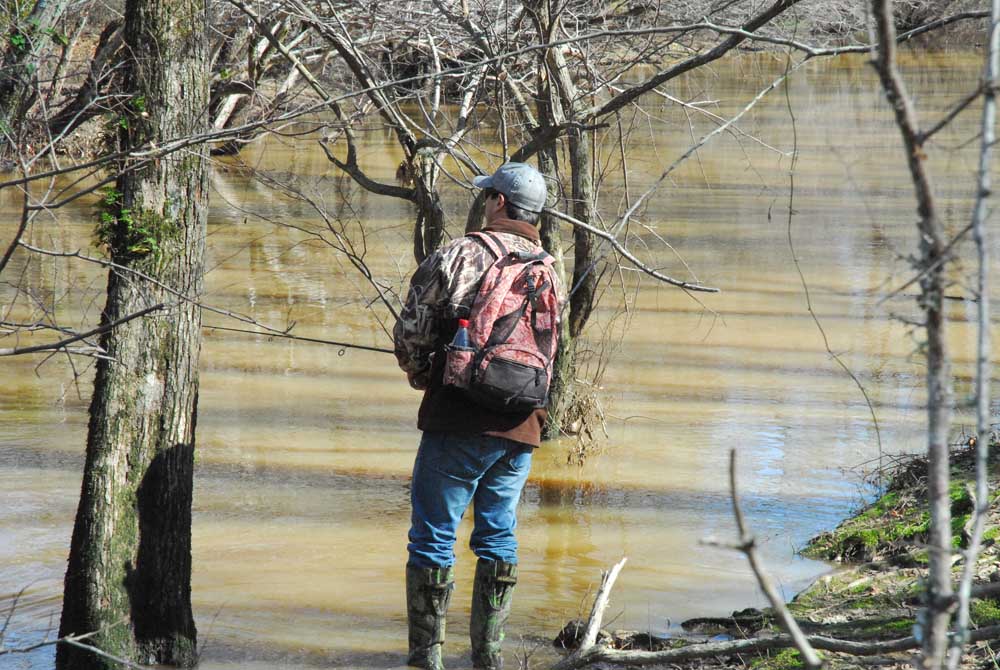White bass spawning about to begin on Palestine, East Texas
Published 10:45 pm Friday, January 17, 2020

- With an extended period of warm weather to bring up water temperatures, white bass should be running up the Neches River above Lake Palestine and other rivers in Northeast Texas.
Almost two years out from a major white bass dieoff on Lake Palestine, fishermen are again starting to watch the Neches River for signs this year’s spawning run is beginning.
The dieoff was prolific, killing tens of thousands of fish across the entire lake. From beginning to end, it only lasted a matter of days and it impacted almost exclusively one species — white bass. And it appears to have had an impact, just not a devastating one.
“It definitely seemed like anglers were catching more sub-legal white bass last spring than normal during the spawning run, which leads me to believe the population at that time contained a proportionally high abundance of young fish,” said department Inland Fisheries biologist Jake Norman. “We weren’t able to calculate what percentage of the population was lost during the fish kill, but I think we could conclude it primarily affected the older fish.”
Norman said on a 20,000-acre lake, it is hard to make a definitive call based solely on fishermen success during a single spawning season, especially one as odd weather-wise as it was in East Texas last year.
“The good news is white bass are very efficient, much like crappie, and one good year class can carry the population for several years. The habitat is still great on Palestine and I am confident the population and fishery will continue to rebound from the fish kill,” he said.
Norman said white bass are fast growing, typically reaching 10 inches in a year and a half, but have a lifespan of only four years.
“This helps reaffirm why the fish kill will not be the end to the Lake Palestine white bass fishery. The live fast, die young philosophy works for them and they can rebound quickly,” he said. It also helps that a single female can produce up to a million eggs annually.
White bass were naturally found in most river systems in East Texas, but because of fishermen moving them from lake to lake they can now be found across most of Texas. The run up the Neches River above Lake Palestine is considered one of the best white bass spawning fisheries in the region. Others include the Sabine River between Tawakoni and Toledo Bend and Big Cypress Creek above Lake O’the Pines. There are others, but many, like Lake Fork, are underutilized.
Like all fish, white bass need certain conditions to begin spawning. In Northeast Texas, those conditions can begin appearing in late January before peaking in February and continuing into March.
“The two biggest environmental factors to trigger white bass spawning and their migratory run up our reservoirs’ tributaries are water temp, especially increasing temps, and water flow. I still feel photoperiod and increasing daylight hours have a role in it too, similar to other species, but temperature and flow are the two big ones,” Norman explained.
He said water temperatures in the mid-50s and climbing, coupled with a warm rain that increases flow is like opening gates to the fish.
“That’s not to say there won’t be a run if those two conditions don’t line up. Steady warming trends with minimal flow will still trigger a spawning migration, and conversely flowing creeks emptying into the reservoir with cold conditions will pull fish into the tributaries as well,” the biologist added.
He said under those conditions, the fish may not actually try to spawn but are drawn to the flowing water. With a warm winter like this year, he said it is possible some fish have already begun migrations up rivers and creeks, or at least staging in the upper reaches of the reservoirs.
“A few days of heavy rain followed by more warming trends could easily get the first wave of fish to move into the creeks and ready to spawn,” Norman said.
With the exception of Pines, most major East Texas reservoirs are currently below full pool. Norman said the dip is not enough to impact the spawning run because the fish can still easily move into the tributaries. However, since white bass are not nest builders, some flow is necessary to keep silt from covering the eggs and keeping them from hatching.
Even if they cannot move up the river, it will not necessarily hurt the fishery.
“The spawns that take place in the river can likely be attributed to a substantial percentage of the Palestine white bass population, but there is enough spawning around the rest of the lake to sustain a population,” Norman said.
However, a lack of a main spot will be noticeable to fishermen and are important to the year-to-year quality of the fishery.
“Would a population of white bass continue to exist in Lake Palestine without any spawning activity in the tributaries, of course. But it would likely trend to a lower density population with overall reduced angler catch rates,” Norman said.
Unlike bass fishermen who will target a single female on a single bed in the spring, white bass fishermen may be casting to schools, but even they can be as finicky as a bedding bass.
“During the spawning season, you can often see a cluster of white bass seemingly thrashing together on the surface, grouped around one fish. These are actively spawning white bass, and similar to other species, are difficult to catch during this time,” Norman warned.






